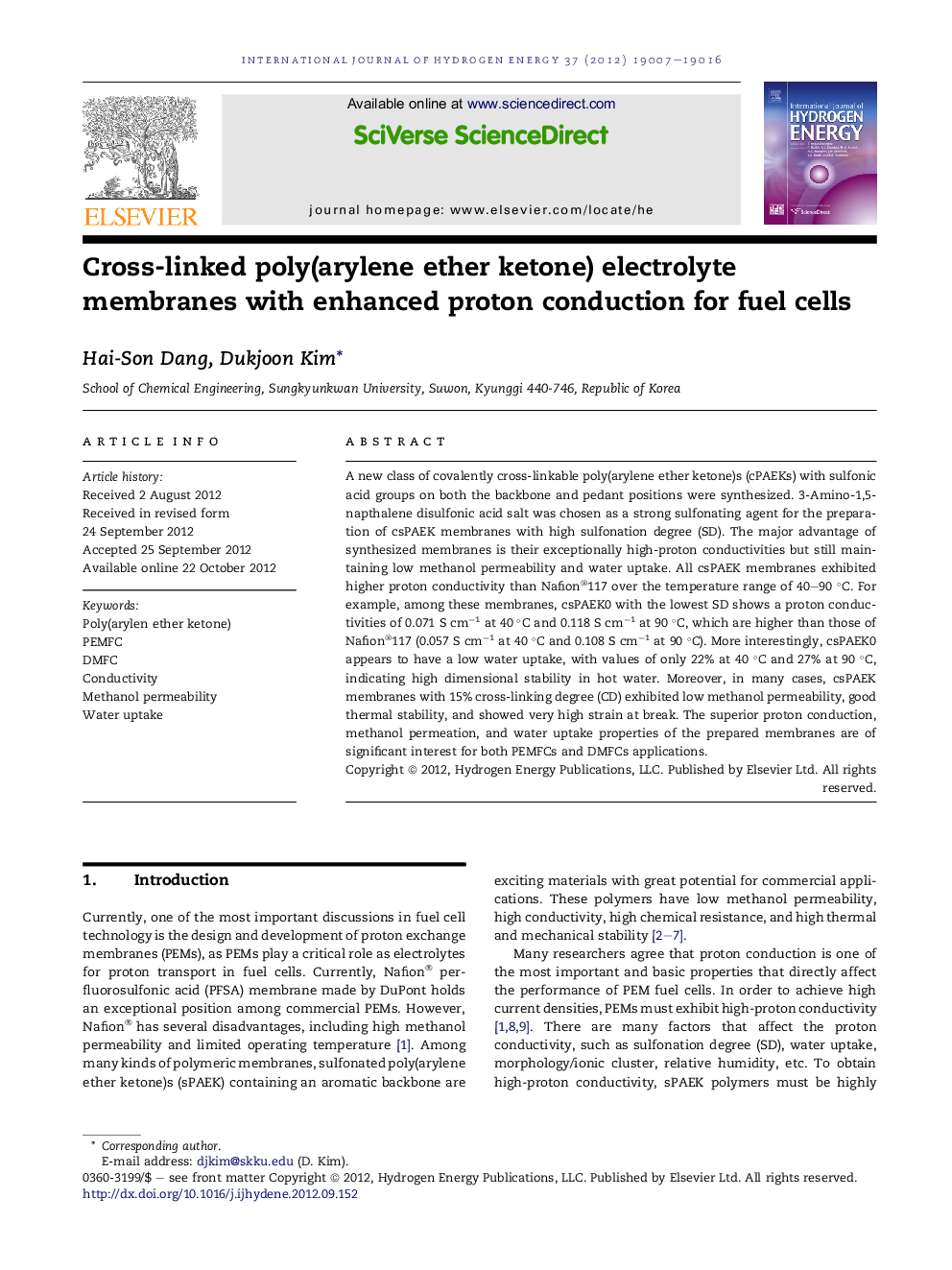| Article ID | Journal | Published Year | Pages | File Type |
|---|---|---|---|---|
| 1276107 | International Journal of Hydrogen Energy | 2012 | 10 Pages |
A new class of covalently cross-linkable poly(arylene ether ketone)s (cPAEKs) with sulfonic acid groups on both the backbone and pedant positions were synthesized. 3-Amino-1,5-napthalene disulfonic acid salt was chosen as a strong sulfonating agent for the preparation of csPAEK membranes with high sulfonation degree (SD). The major advantage of synthesized membranes is their exceptionally high-proton conductivities but still maintaining low methanol permeability and water uptake. All csPAEK membranes exhibited higher proton conductivity than Nafion®117 over the temperature range of 40–90 °C. For example, among these membranes, csPAEK0 with the lowest SD shows a proton conductivities of 0.071 S cm−1 at 40 °C and 0.118 S cm−1 at 90 °C, which are higher than those of Nafion®117 (0.057 S cm−1 at 40 °C and 0.108 S cm−1 at 90 °C). More interestingly, csPAEK0 appears to have a low water uptake, with values of only 22% at 40 °C and 27% at 90 °C, indicating high dimensional stability in hot water. Moreover, in many cases, csPAEK membranes with 15% cross-linking degree (CD) exhibited low methanol permeability, good thermal stability, and showed very high strain at break. The superior proton conduction, methanol permeation, and water uptake properties of the prepared membranes are of significant interest for both PEMFCs and DMFCs applications.
► 3-Amino-1,5-napthalene disulfonic acid salt was chosen as a sulfonating agent. ► The major advantage of membranes is their exceptionally high-proton conductivities. ► csPAEK membranes exhibited low methanol permeability, good thermal stability. ► The conductivity increased with increasing cluster dimension.
